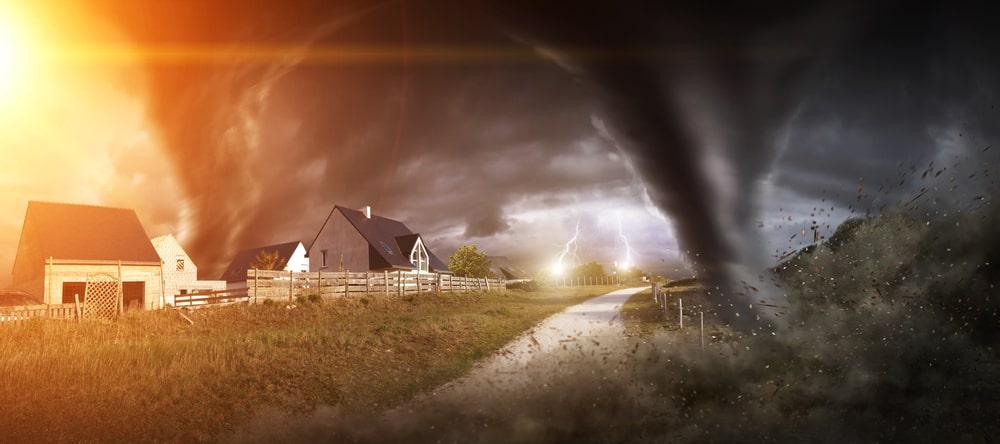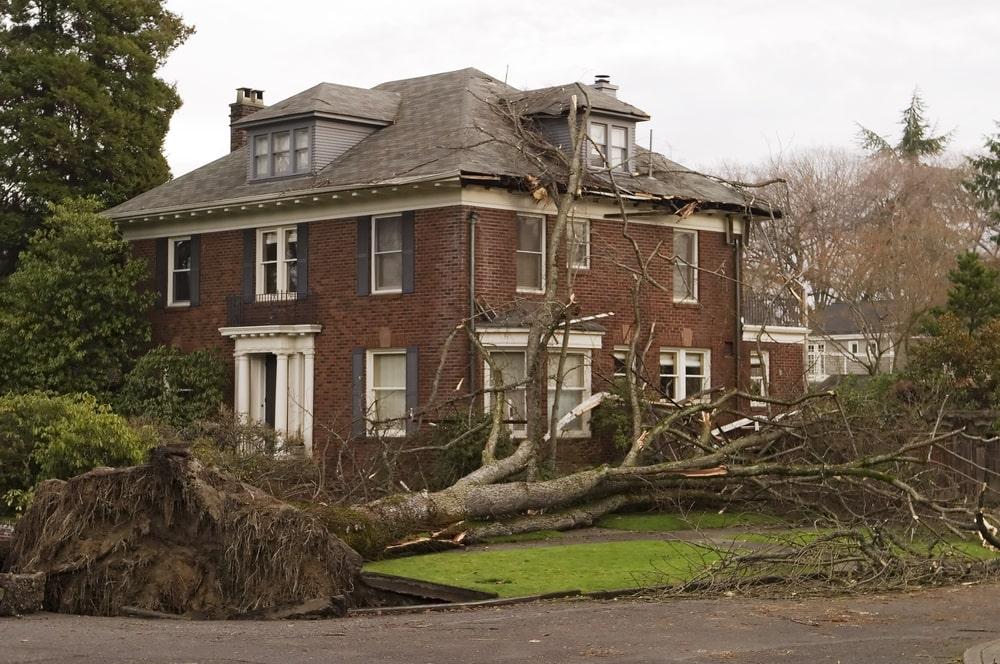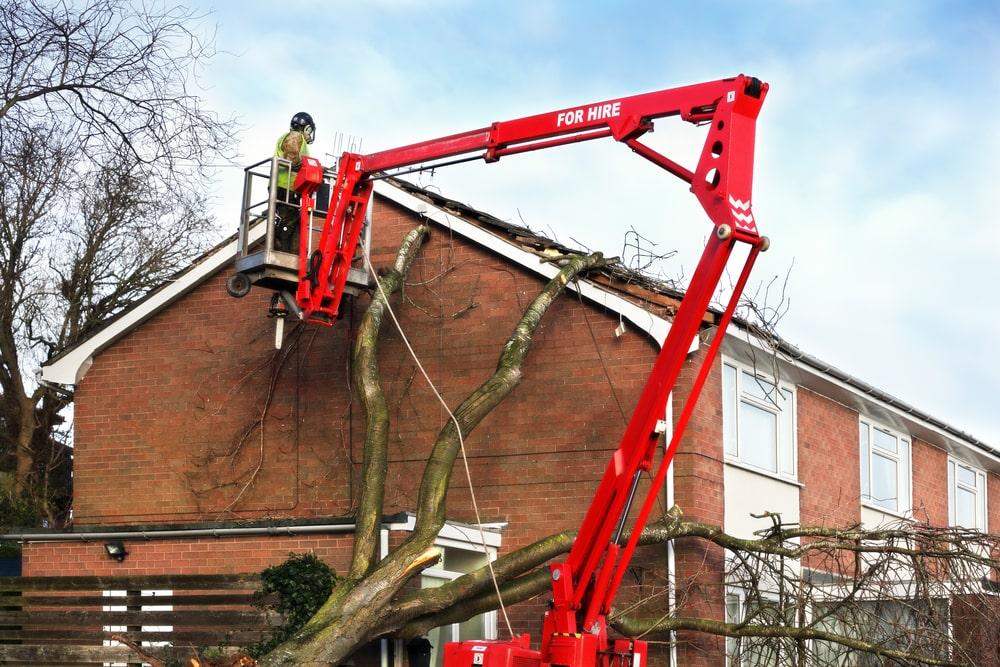Storms can be unpredictable and devastating, leaving a path of destruction in their way. Whether it’s a hurricane, tornado or heavy rainfall combined with strong winds, storm damage can do significant harm to your property.

Dealing with the aftermath of such events can be overwhelming for homeowners who don’t know where to start. That is why we have created this comprehensive guide on what to do after a severe storm occurs.
In this post, you’ll discover 5 practical steps to help get back on track and restore your home quickly. So let’s get started!
What is Storm Damage?

Storm damage refers to any destruction caused by the effects of a severe storm, including damage to businesses, homes and cars. Storms can strike anywhere with high winds or heavy rain with hailstones, snow storms like snow and ice; it’s costly to fix or replace damaged properties, they happen all year round so people must learn how to cope with such events.
After a storm, it’s essential to assess the damage done to your home and property. Storm damage may include broken or missing shingles, damaged gutters, downed tree branches and more; if you have storm damage it’s essential to take immediate steps for prevention of further destruction. Here are quick steps you should take after storm damage:
- Take photos of the damage. This will be helpful for insurance claims.
- Get in touch with your insurer. In order to receive reimbursement for repairs, you must file a claim.
- Make temporary repairs. If water is seeping into your home, cover the affected area with a tarp or plastic sheeting to help prevent further damage while permanent solutions can be implemented.
- Hire a reliable Restoration services contractor to carry out the repairs. Get multiple estimates before selecting someone so you can be certain you’re getting an honest price for their services.
- Assess Your Home for Storm Damage
If your home has been affected by storm damage, the first step should be to inspect for signs of harm. Check for broken windows, holes in the roof or water damage – and take pictures so insurance companies can see them. Once documented, call your insurer and file a claim.
- Evaluate and Assess Damage to Your Home
After a storm, it is essential to carefully evaluate the damage done to your property. Doing this will allow you to decide what repairs are necessary and how best to proceed
Begin your home inspection by conducting a comprehensive walk-through, both inside and outside. Pay special attention to any obvious damage such as broken windows, fallen trees or missing shingles; but also note any less noticeable flaws like water stains on the ceiling or warped floorboards.
Once you have an accurate assessment of the damage, determine its severity. If there is substantial destruction, hiring a professional contractor for repairs may be necessary; however, if it is relatively minor in scope, you may be able to handle making repairs yourself.
No matter the cause of damage, it’s essential to document it with photos or video. Doing so will be invaluable if you ever need to file an insurance claim or receive financial assistance for repairs.
- Contact Your Insurance Provider
After a storm, the first step should be to assess the damage done to your home and property. If you have insurance, contact your provider right away to begin the claims process. However, if no coverage exists or if your policy doesn’t cover storm damage, then you will have to cover repairs out of pocket.
In either case, it’s essential to document the damage with photos or videos in order to file an insurance claim or show contractors when getting estimates for repairs. Once you have this evidence, contact either your insurer or reliable contractors and begin making repairs right away.
- Minimize Additional Home Damage Where Necessary
If your home has suffered storm damage, it is essential to take steps to minimize further harm. Cover any broken windows with plywood or plastic sheeting for extra protection from external elements. Tarping damaged roofs as soon as possible help shield them from water damage, while flood damage should be addressed promptly by removing wet materials and drying the area thoroughly to prevent mold growth.
- Begin Storm Damage Repair Work and Select an Experienced Contractor
After the storm has passed and you have assessed the damage, it’s time to start repair work. One of the most critical decisions you will make during this process is selecting an experienced contractor.
How to Stay Secure While Checking Your Home After Storm Damage:

Following a storm, it’s essential to inspect your home for damage and stay secure while doing so. Here are some tips for staying secure when inspecting property after storm damage:
- Wear appropriate clothing and footwear, such as closed-toed shoes, long pants and a long sleeved shirt. Additionally, gloves and eye protection should be worn.
- Be mindful of your environment by being alert for downed power lines, loose debris and other potential hazards.
- When inspecting a damaged home, use flashlights instead of candles or lanterns as these may pose risks in an already compromised structure.
- Never enter a damaged building unless it is safe to do so; if in doubt, seek advice from an experienced engineer or building inspector for guidance.
- Be alert for potential hazards like broken glass or exposed nails.
- Assume that fallen power lines are live and present a risk; stay at least 10 feet from them and notify law enforcement and utility companies promptly.
- Be wary of standing water, especially near areas with downed power lines.
- When possible, avoid checking for storm damage at night; if necessary, use an emergency flashlight instead of an open candle or flame; this reduces the risk of explosion or fire due to damaged gas lines.
- Wind and rain can create physical hazards such as window damage, collapsed walls, standing or stagnant water in basements or interior spaces.
Image by Depositphotos





